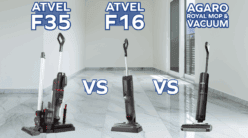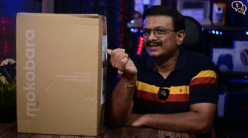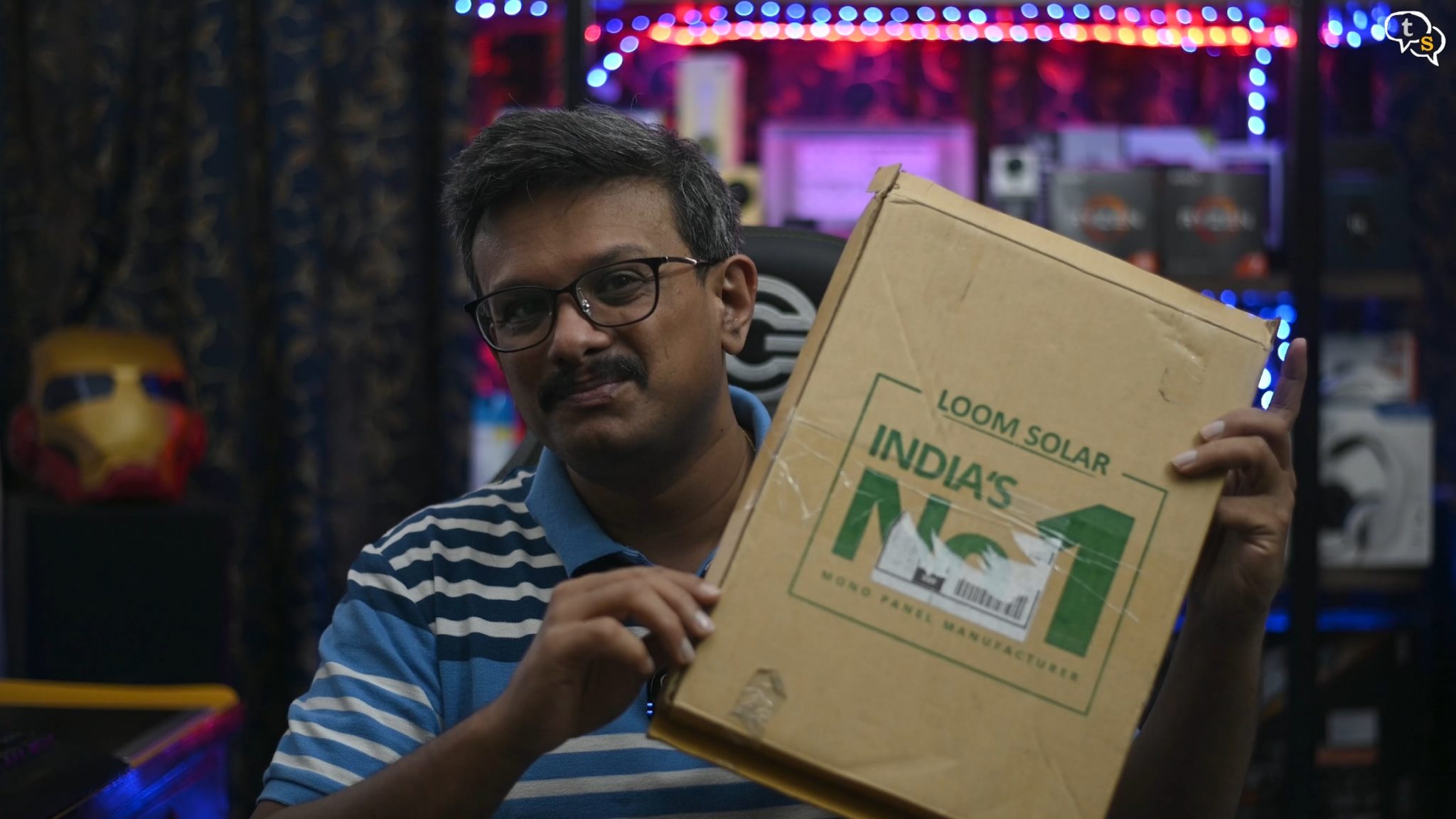 Well, I always wanted to work with solar panels, especially power gadgets outdoors without having to run any wiring. I picked up a 10 watt panel made by loom solar to see what devices I can power using the energy from the sun. Let’s check it out.
Well, I always wanted to work with solar panels, especially power gadgets outdoors without having to run any wiring. I picked up a 10 watt panel made by loom solar to see what devices I can power using the energy from the sun. Let’s check it out.
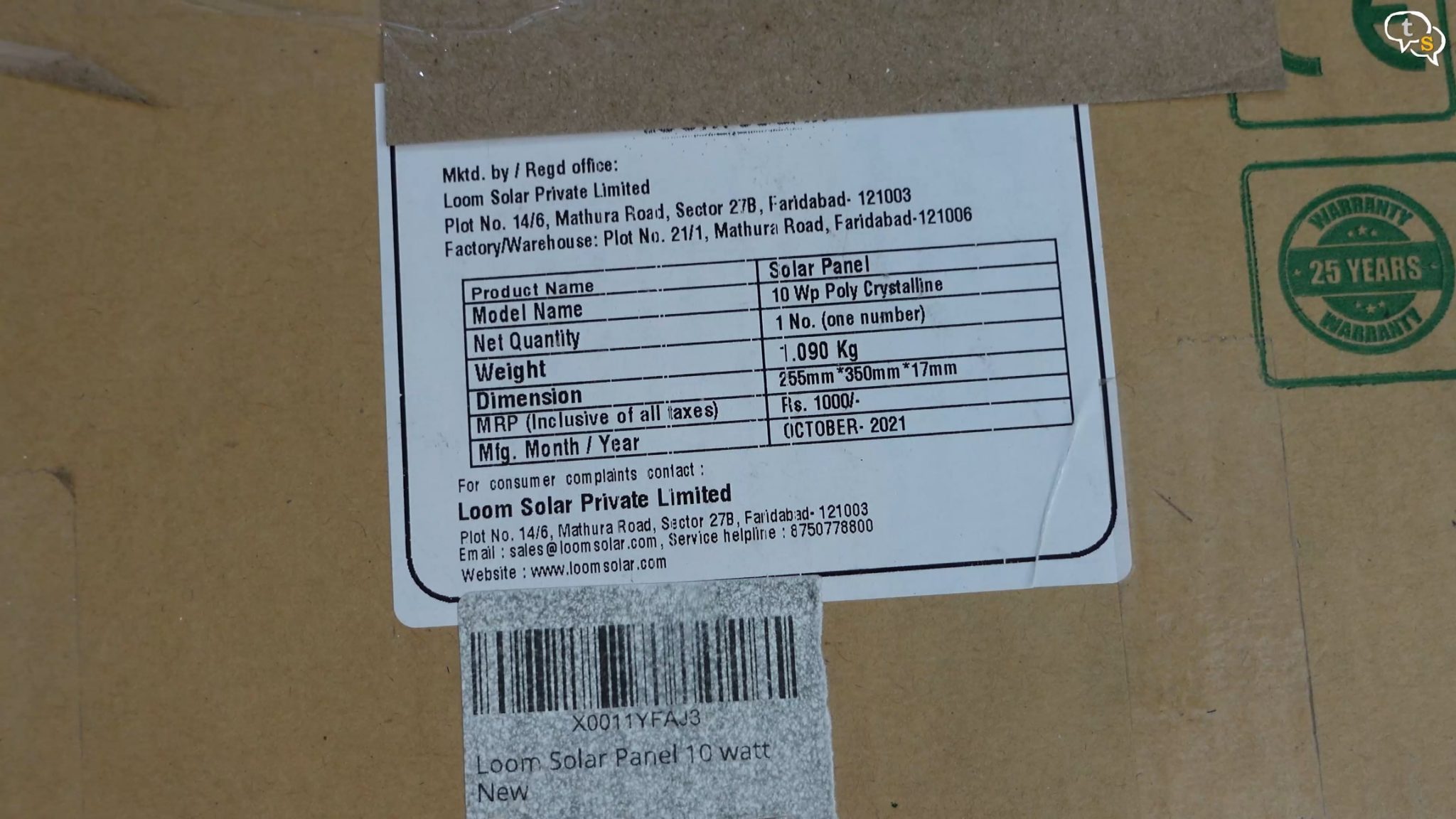
This is the Loom solar 10 watt Poly crystalline solar panel. It weighs 1.09 kg, not too heavy.
It cost me Rs 1000, so I bought it to try some experiments on devices I can charge. If it works well, I might consider moving to bigger panels in future.
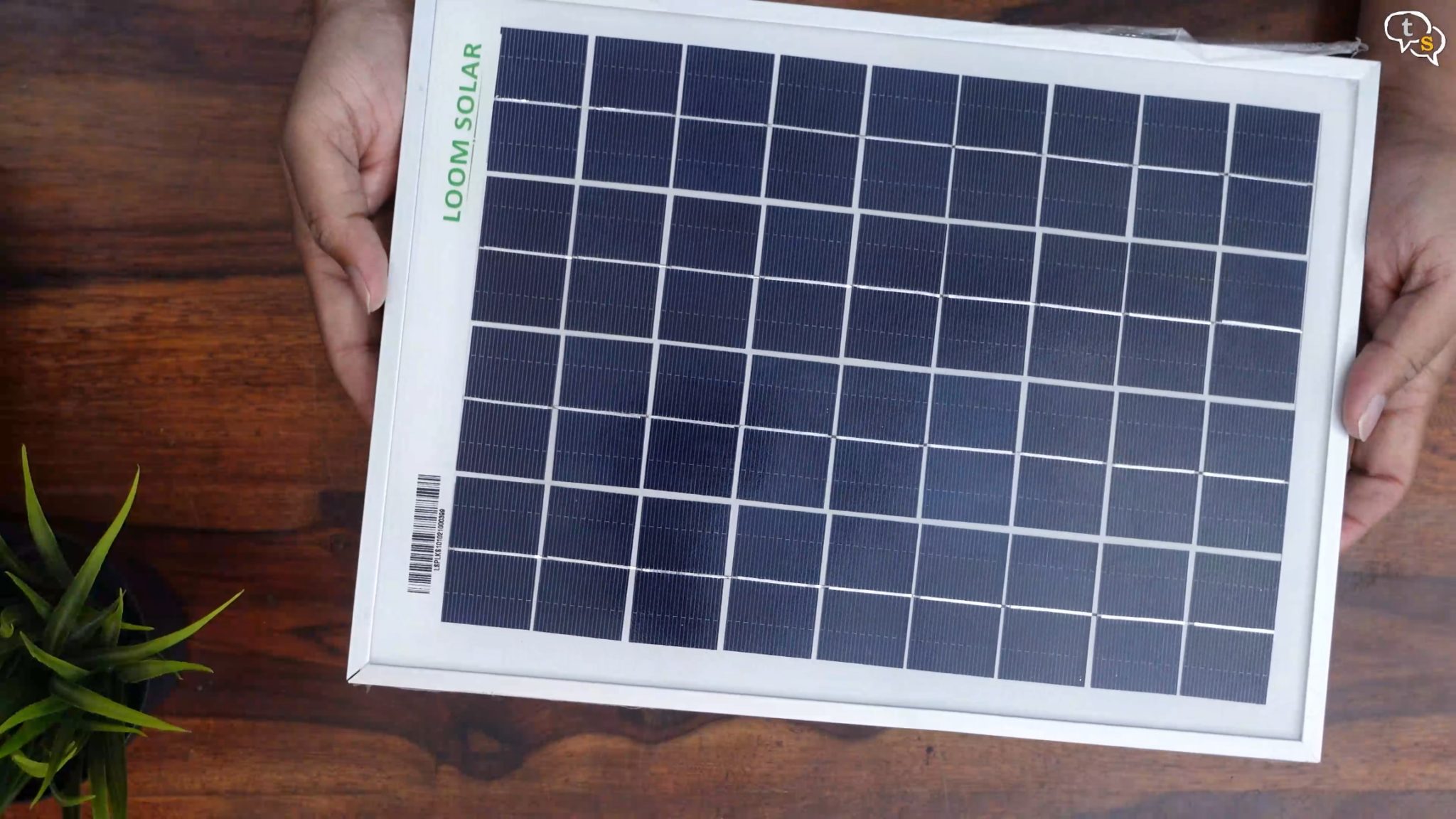
Let’s get the panel out of the box, it’s big. Dimensions are 285 x 350 x 22mm.
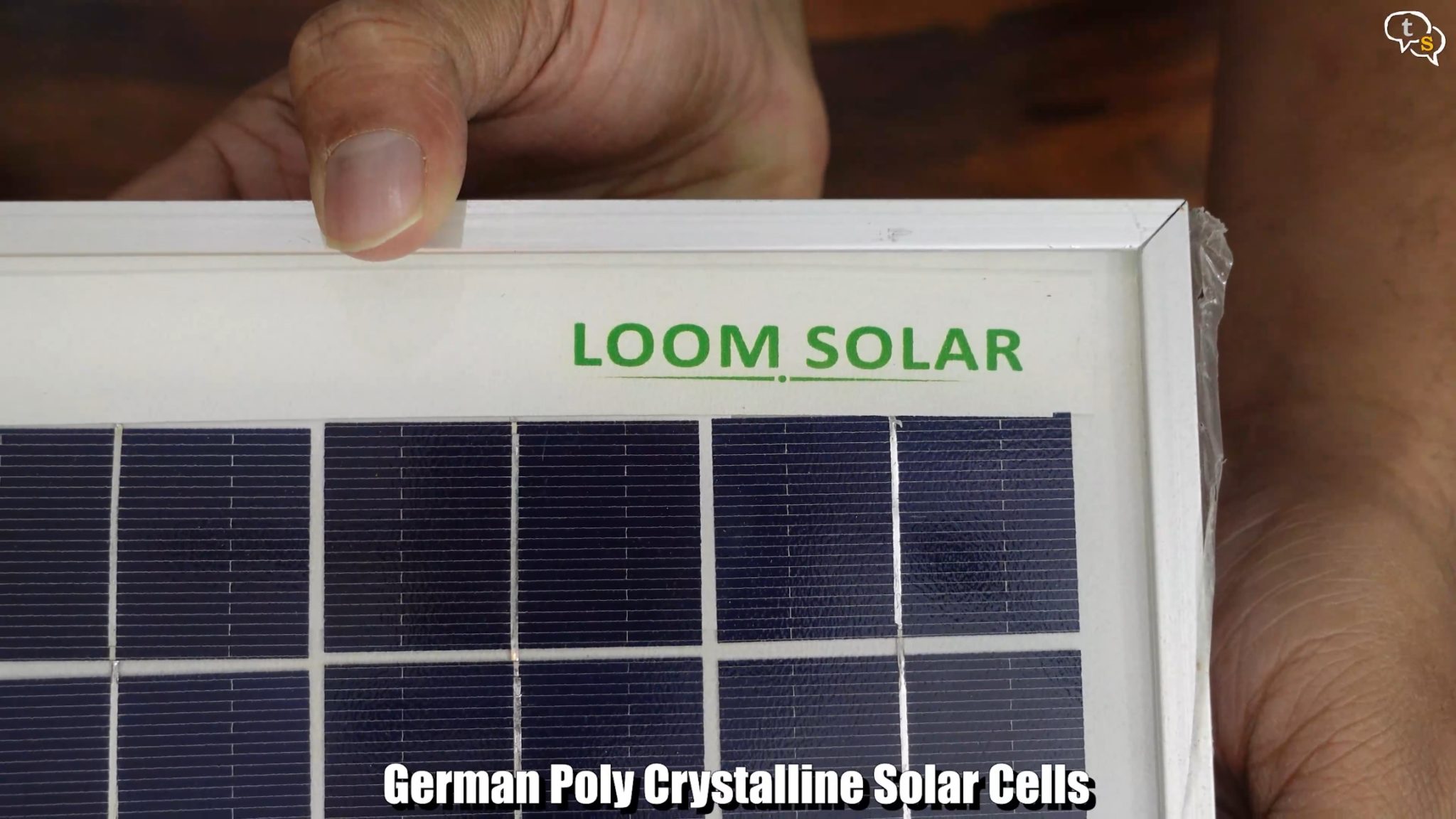
We have the loom solar branding on the top right. Most of the front is made up of polycrystalline solar cells, which are identifiable by the blue hue. They are not as efficient as monocrystalline cells but are very durable.
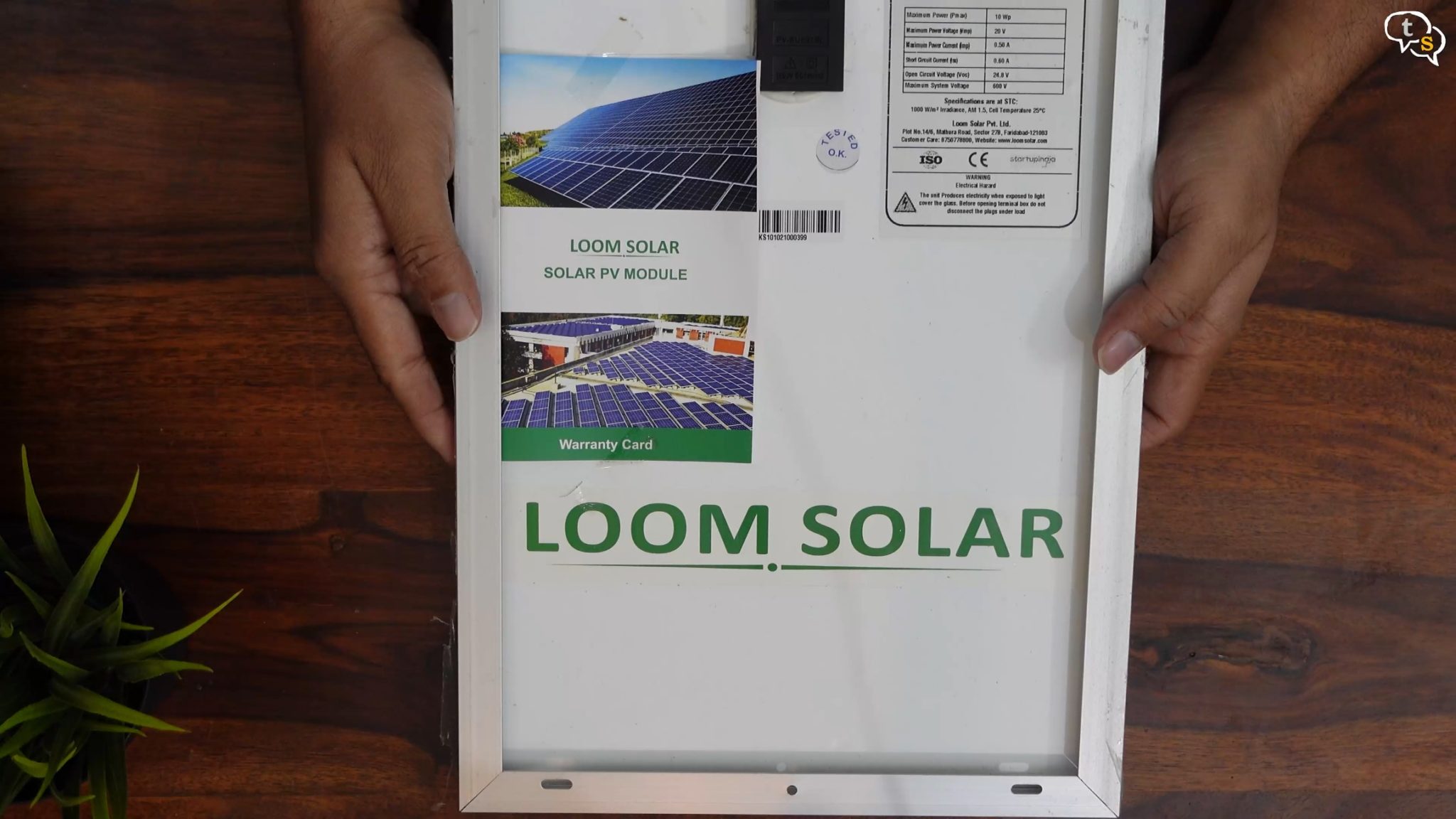
We have a warranty card wedged into the back of the panel. Keep this safe.
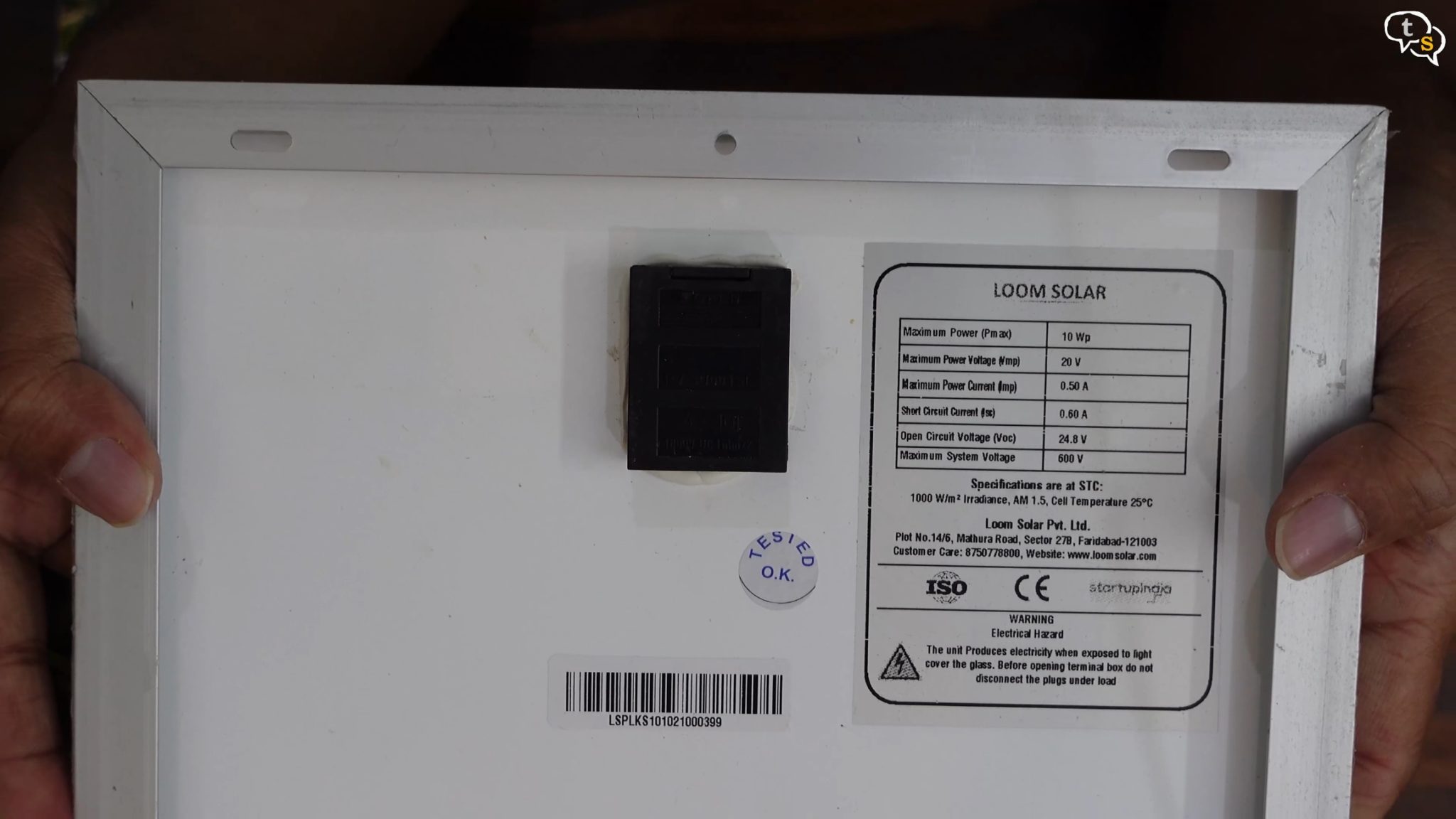
A table on the right lists out the panel’s specifications.
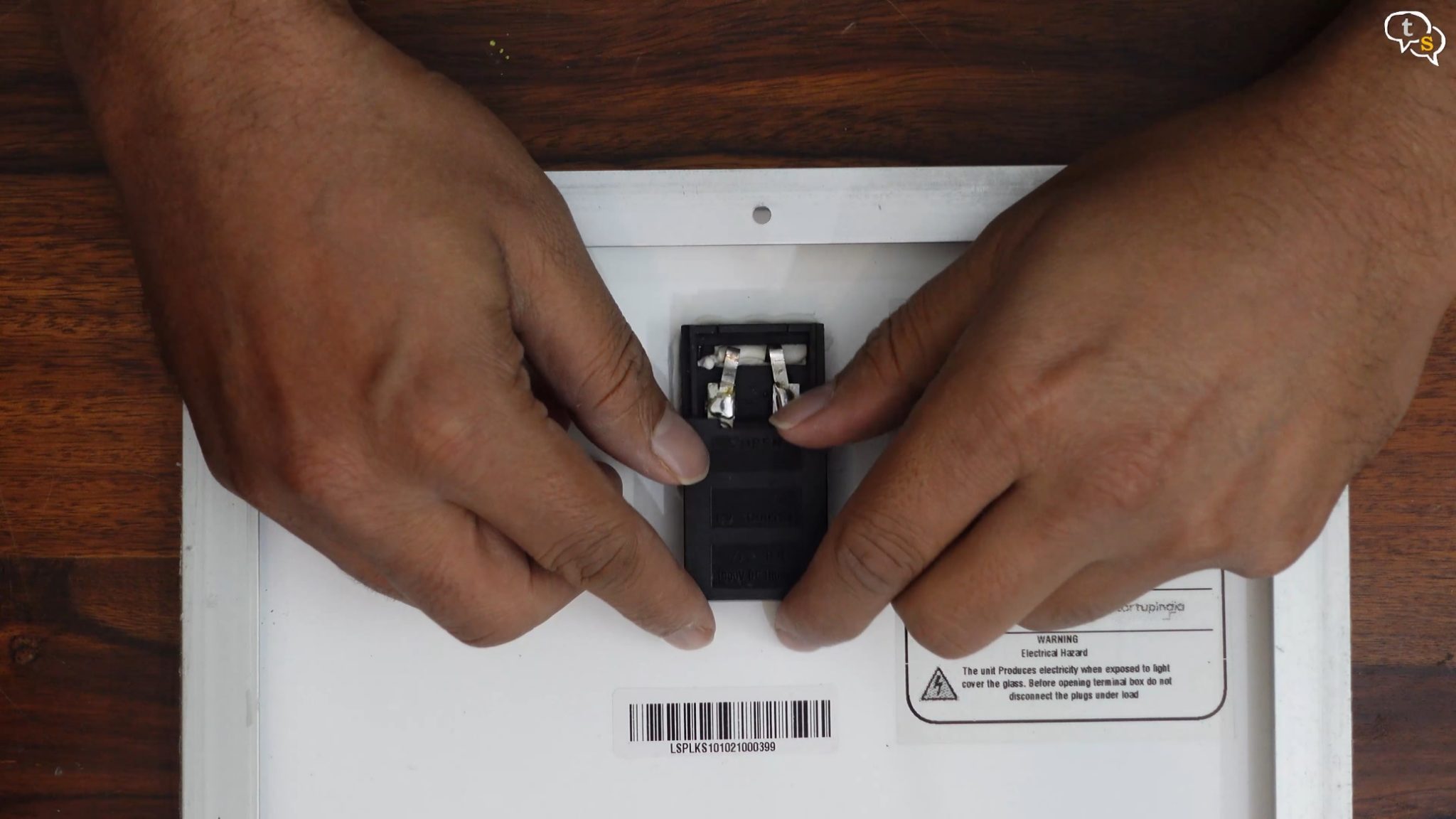
This covered section here, with the slidable cover, sliding it out we find the electrical terminals within.
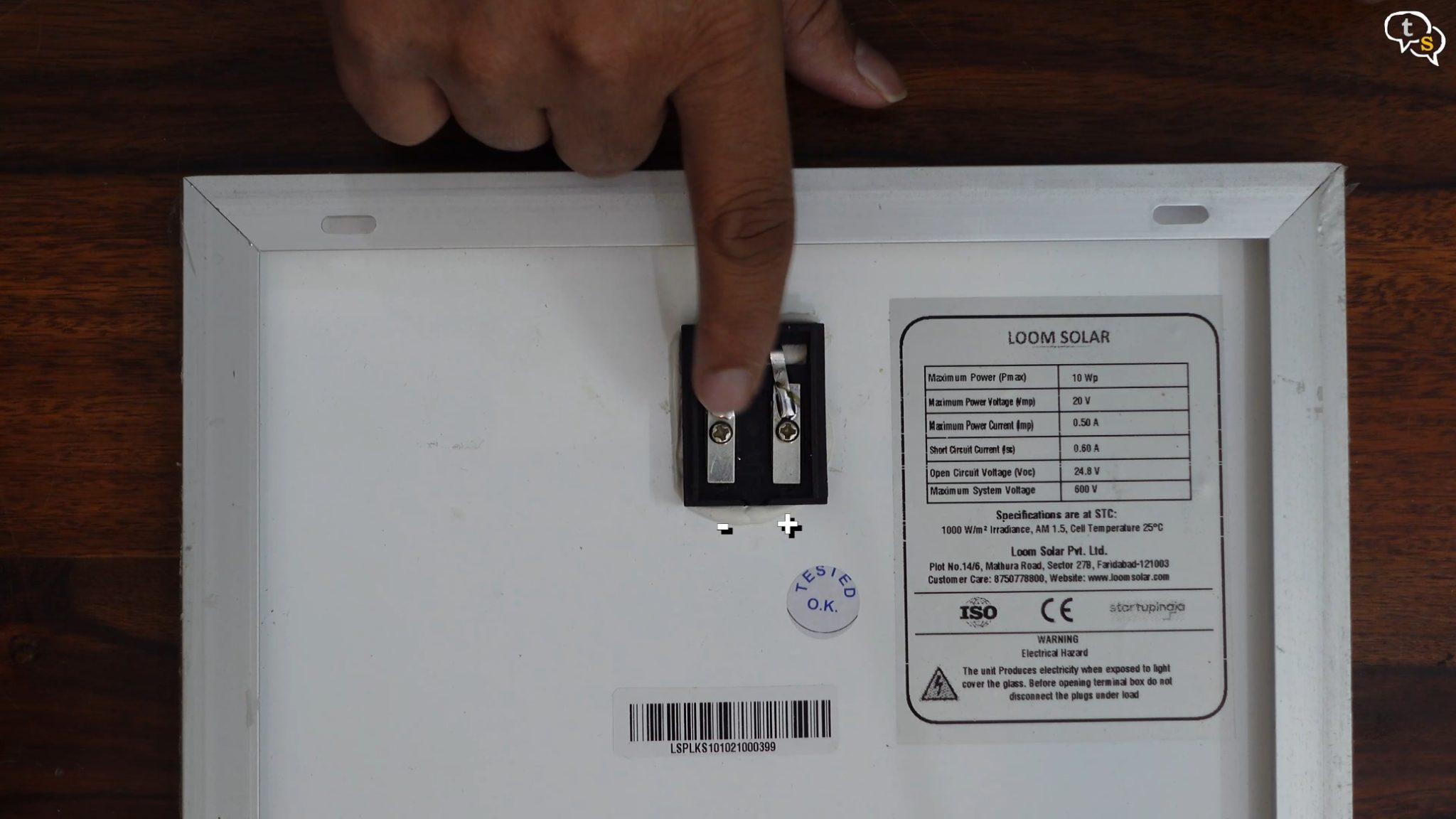
The right terminal is positive, and the left is negative.
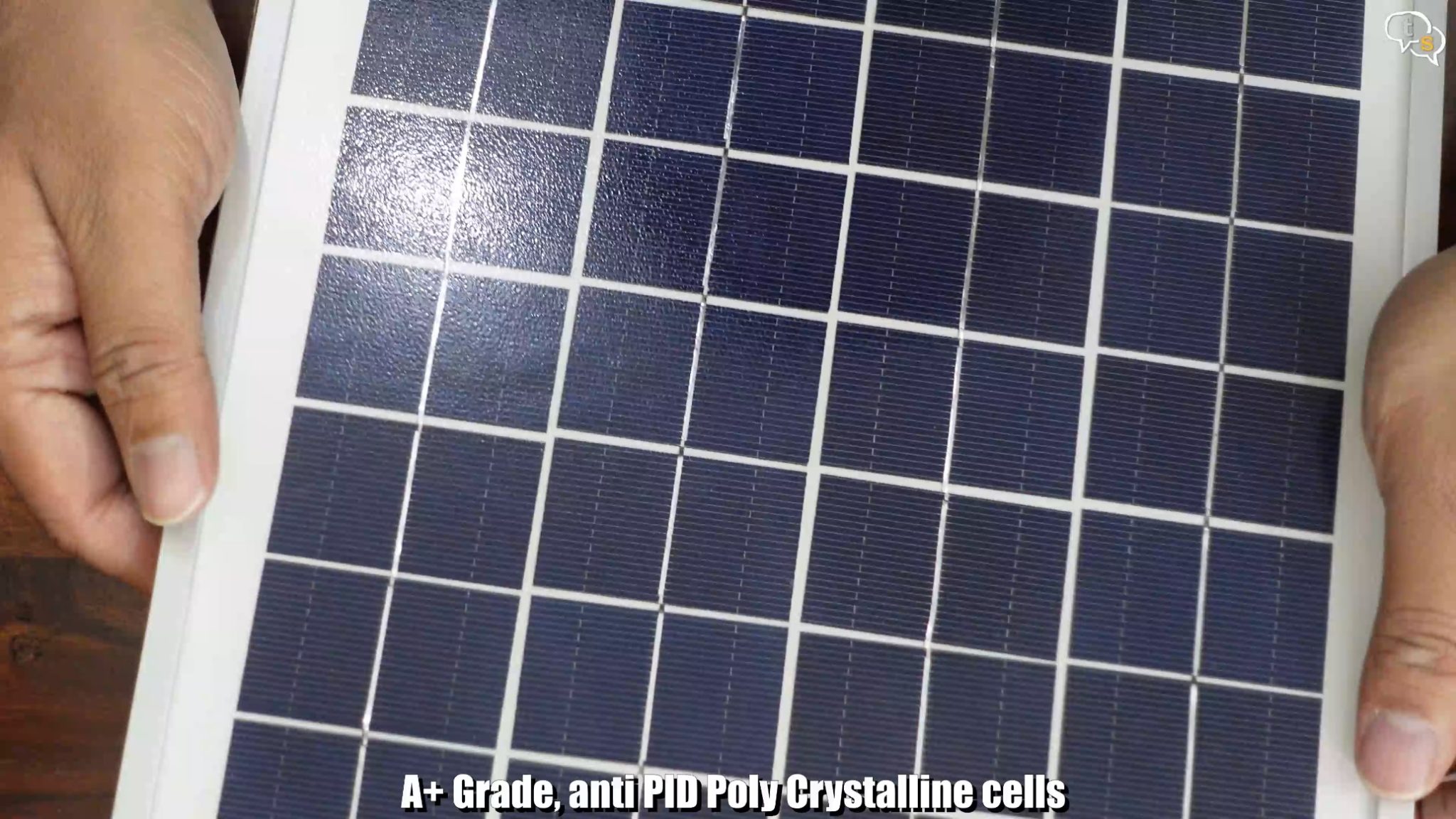
On the front, each PV cell is made of multiple silicon crystal fragments that are melded together during manufacturing. You may see them called “multi-crystalline panels” or “poly panels.” too.
The blue hue is quite evident.
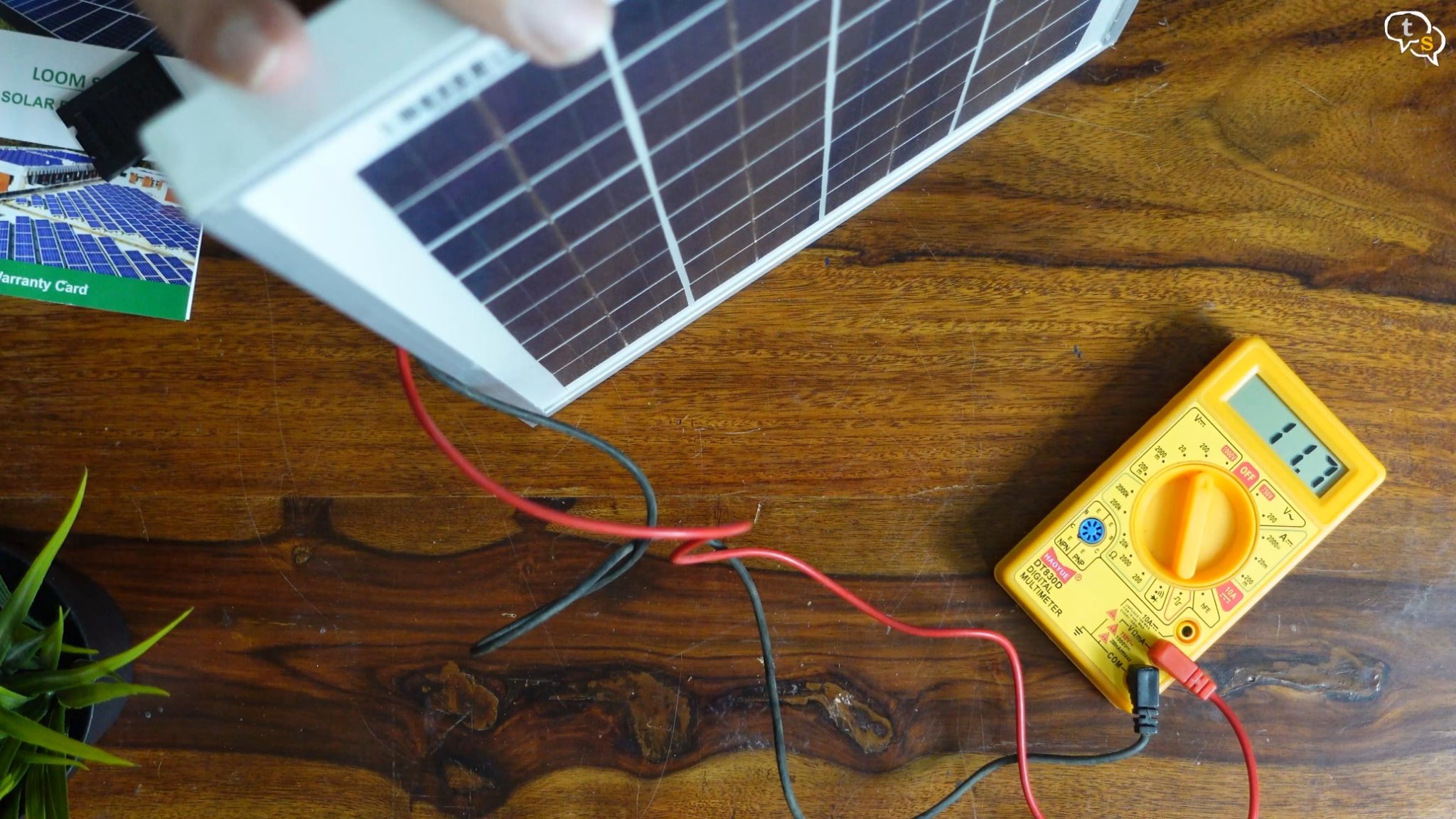
The panel should be capable of producing some power even with my studio lights, let’s check it out using a multi-meter.
Not bad, we’re getting around 11.7 volts. This is of course because of studio lights and not just standard tube lights.
Ok, I just wanted to check the polarity of the terminals, now to get it ready to charge up my phone, or maybe even a CCTV camera.
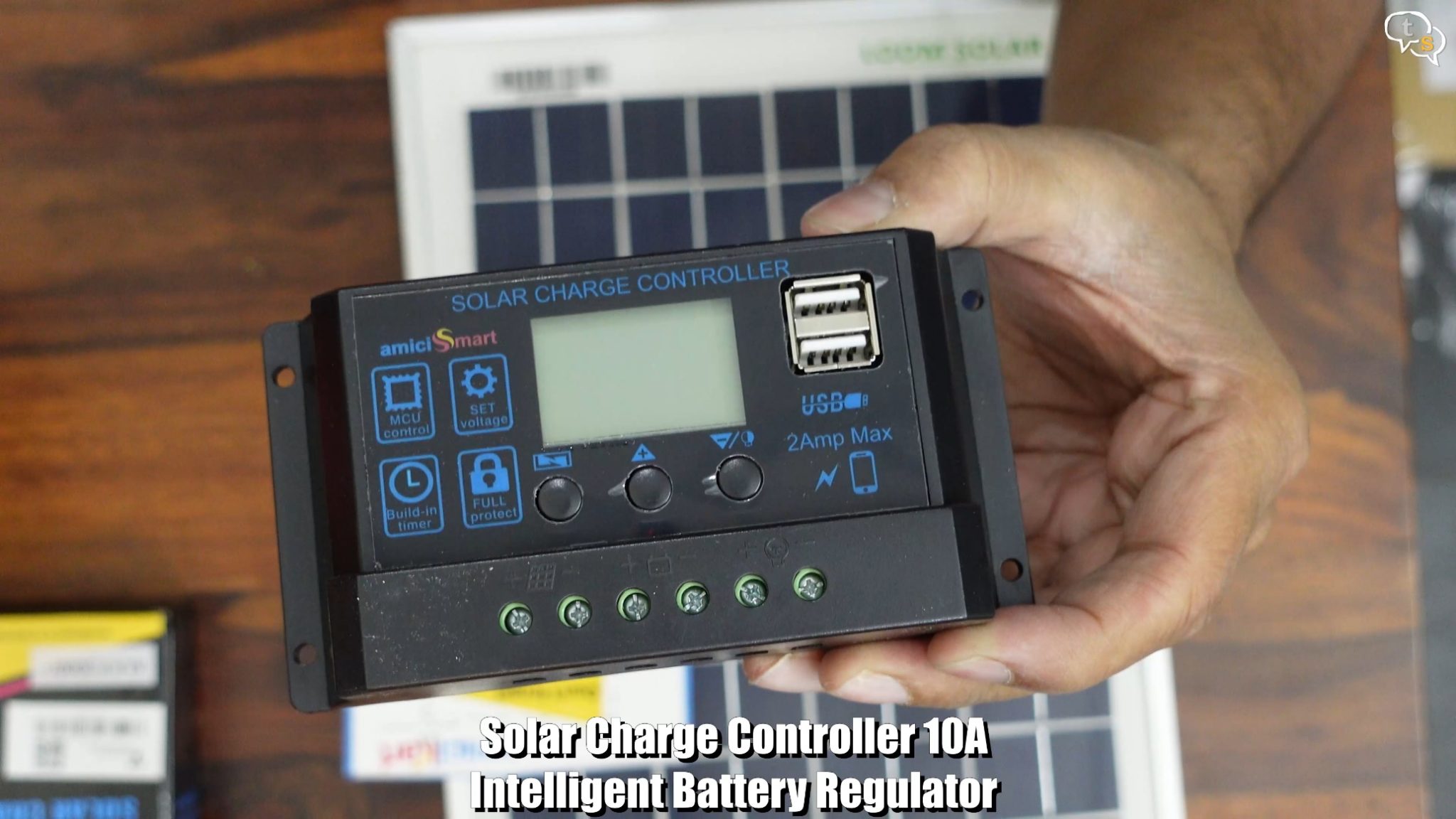
If you want to charge a phone and also charge a 12v battery, you can purchase this solar charge controller. It allows connecting a battery to it, and provides two usb ports to charge any usb powered device.
I didn’t want to have something so big hanging outside my house as the panel by itself is quite big.
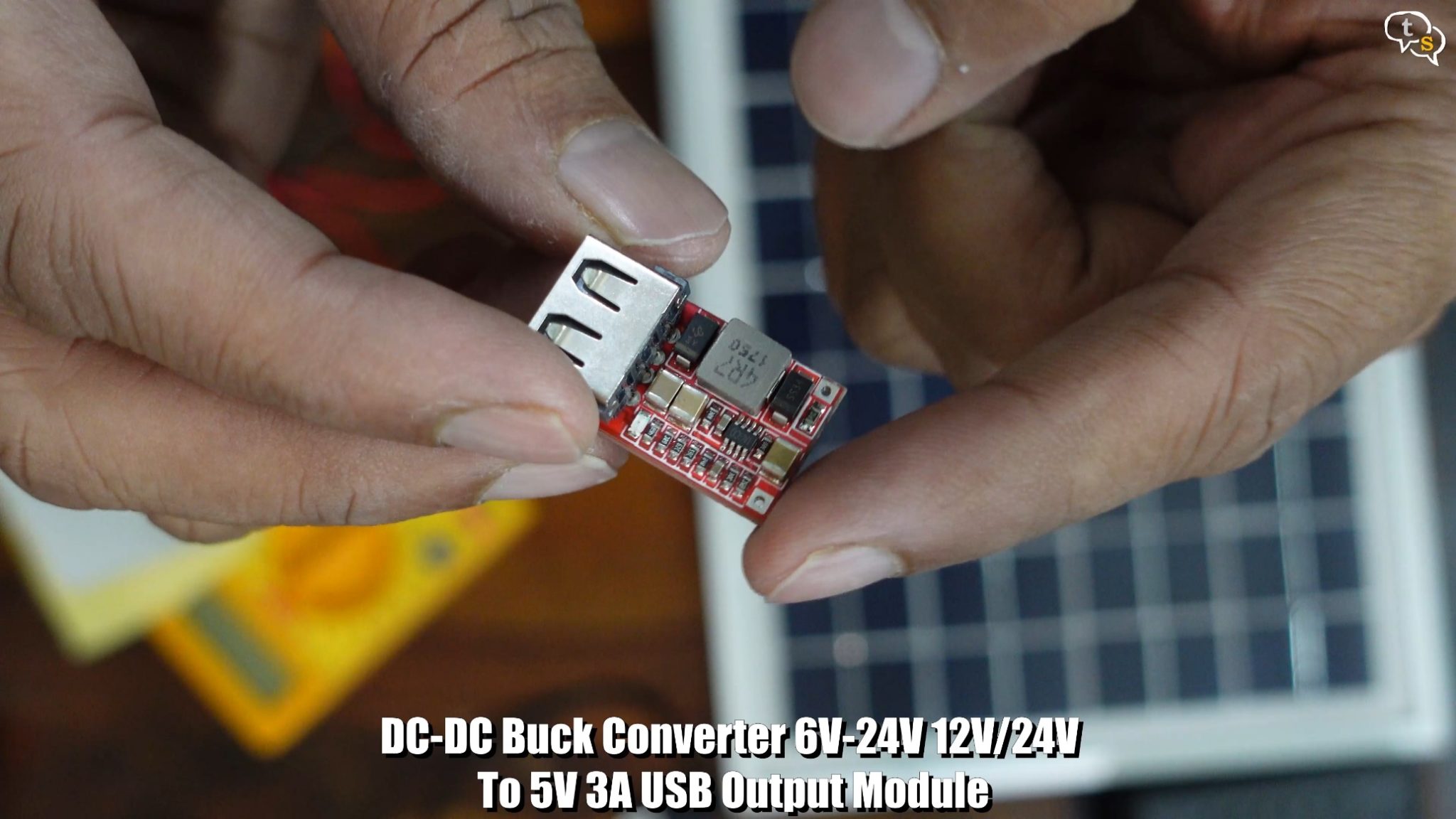
I shifted to a USB DC-DC buck converter which can convert voltage between 6v-24v to 5v 3 amps.
That should be fine for phones or CCTV cameras I guess.
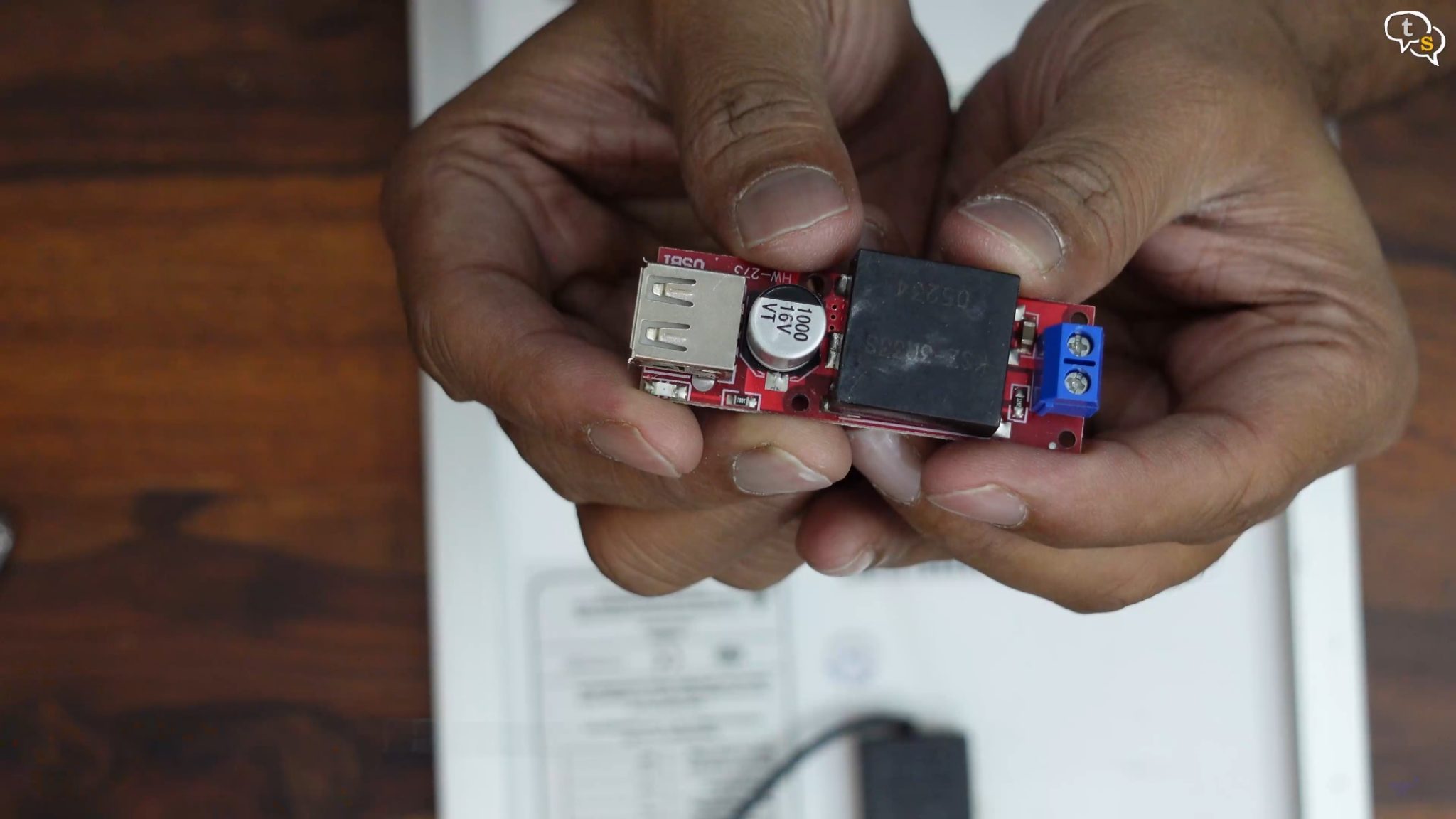
But I noticed you would need to solder the leads, which I was not keen on, so I picked up one that has screw-in wire terminals.
This allows us to easily shift the device for use in other projects.
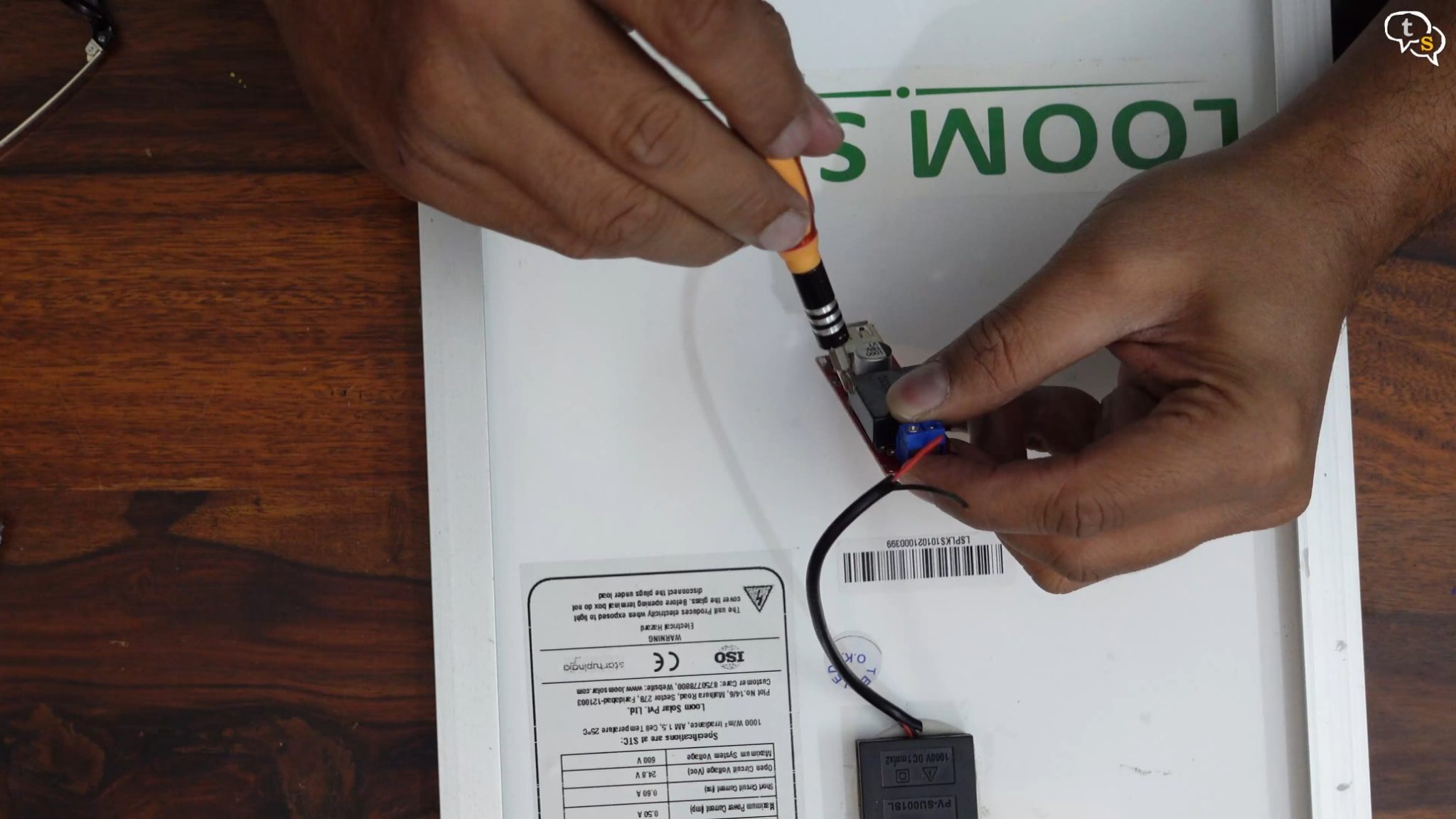
Let’s install it, connect the red wire to positive and the black to negative.
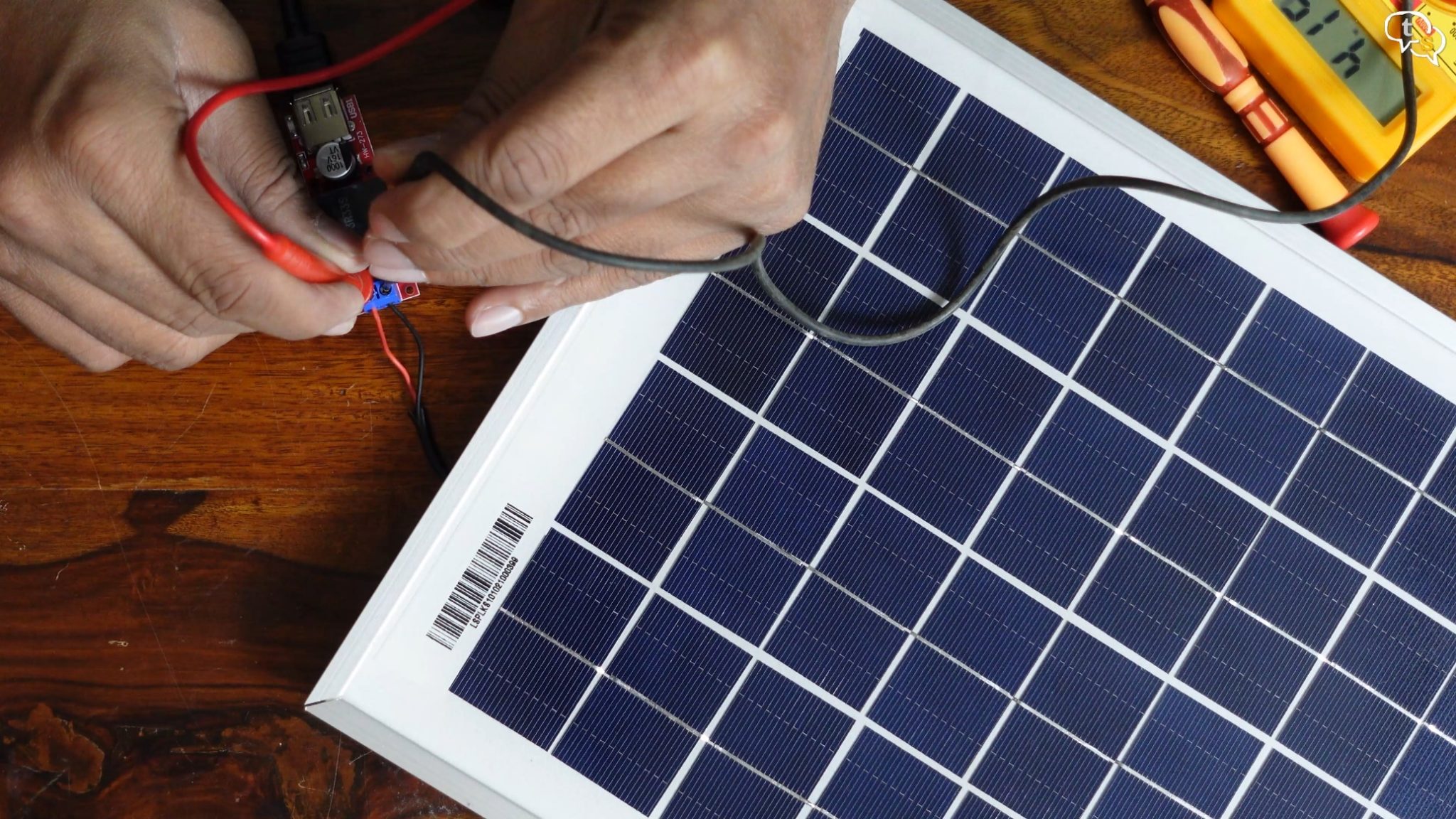
This is DC power, let’s test the voltage reaching the device. It’s quite low at 4.14 volts.
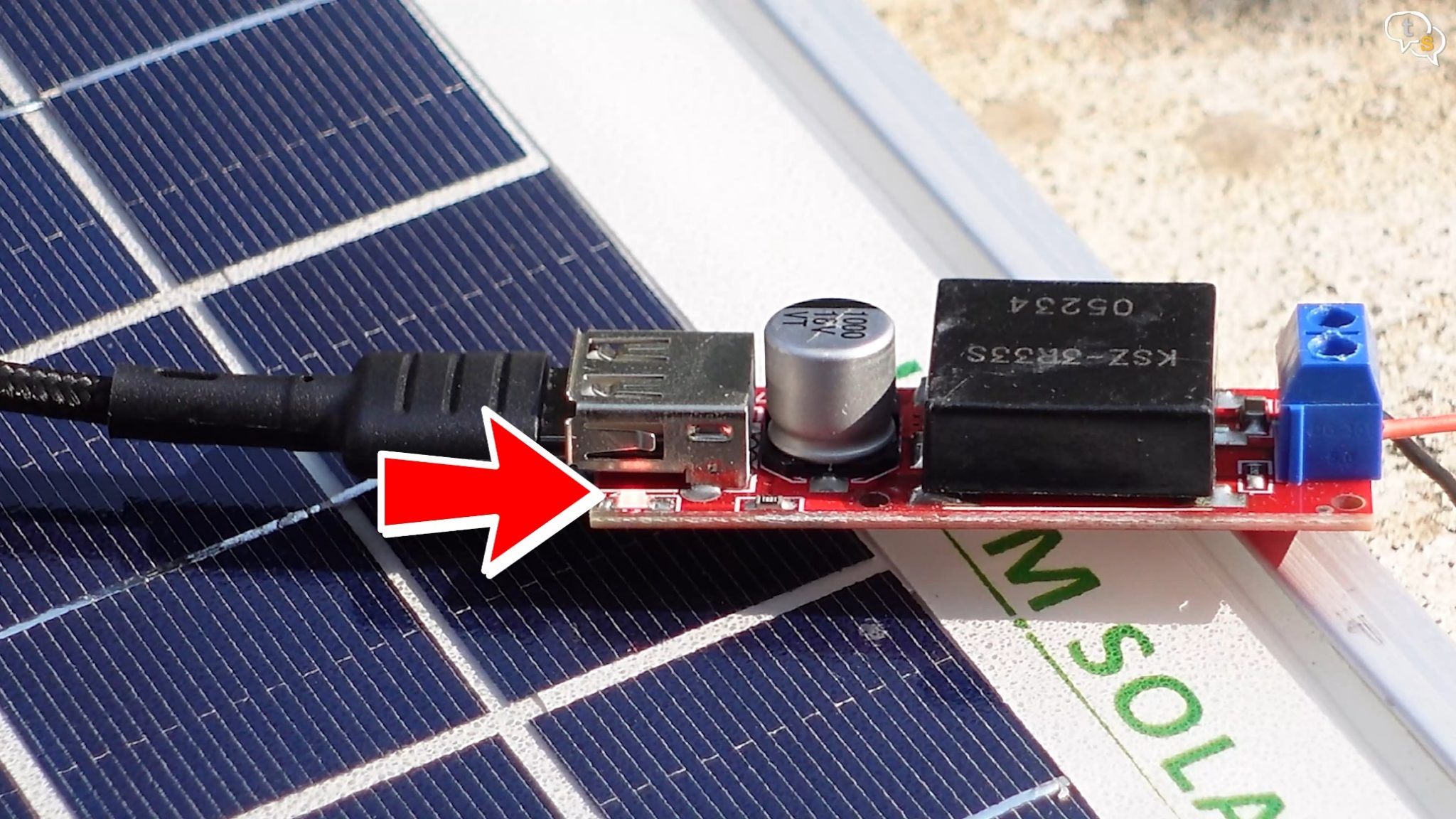
Let’s take it outside the house and test, it should help as we have a bright sunny day outdoors.
You can see a red light here, indicating it’s getting enough input voltage. Cool.
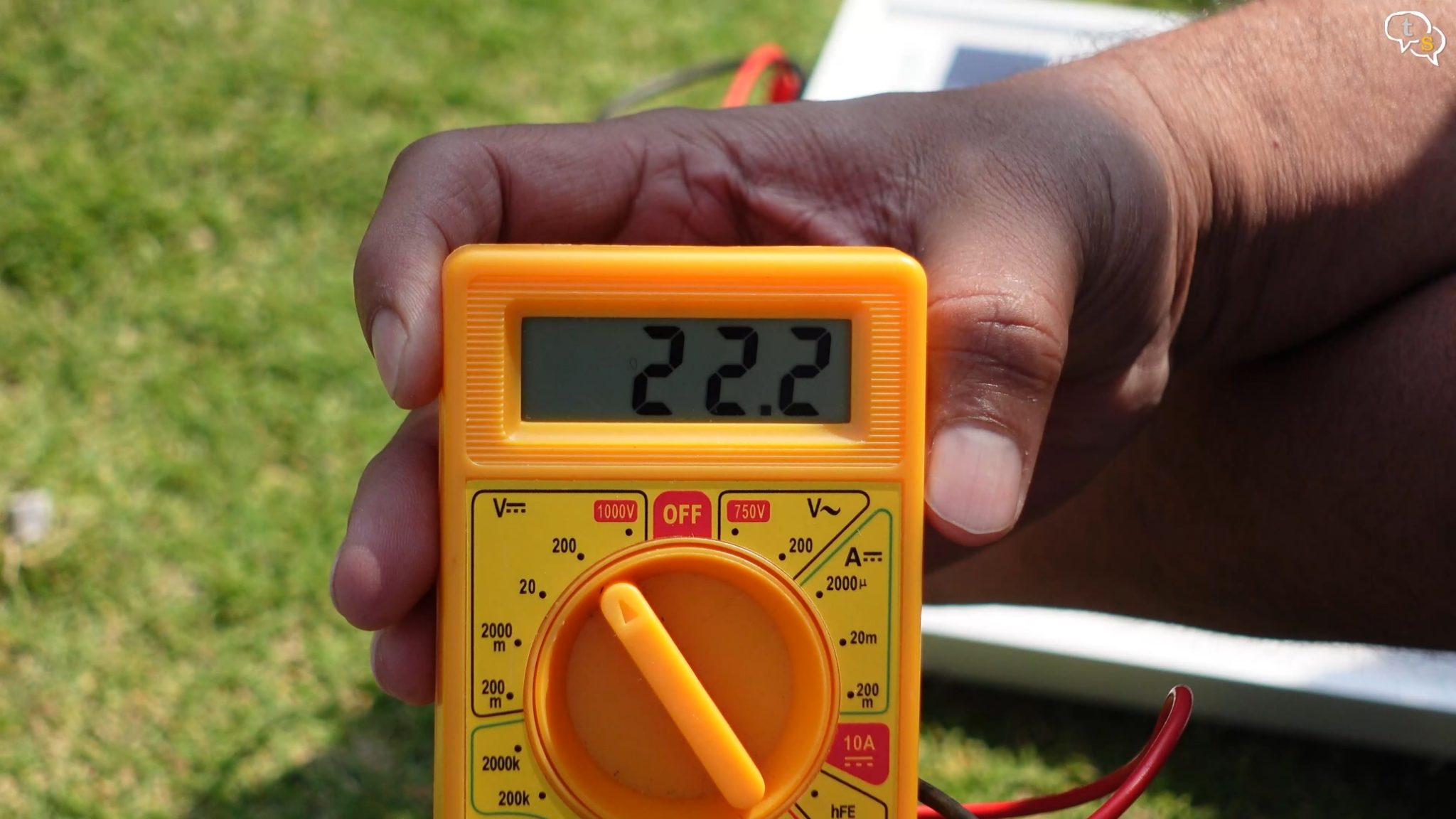
Checking the input voltage, we are getting 21, 22.2 volts. Nice.
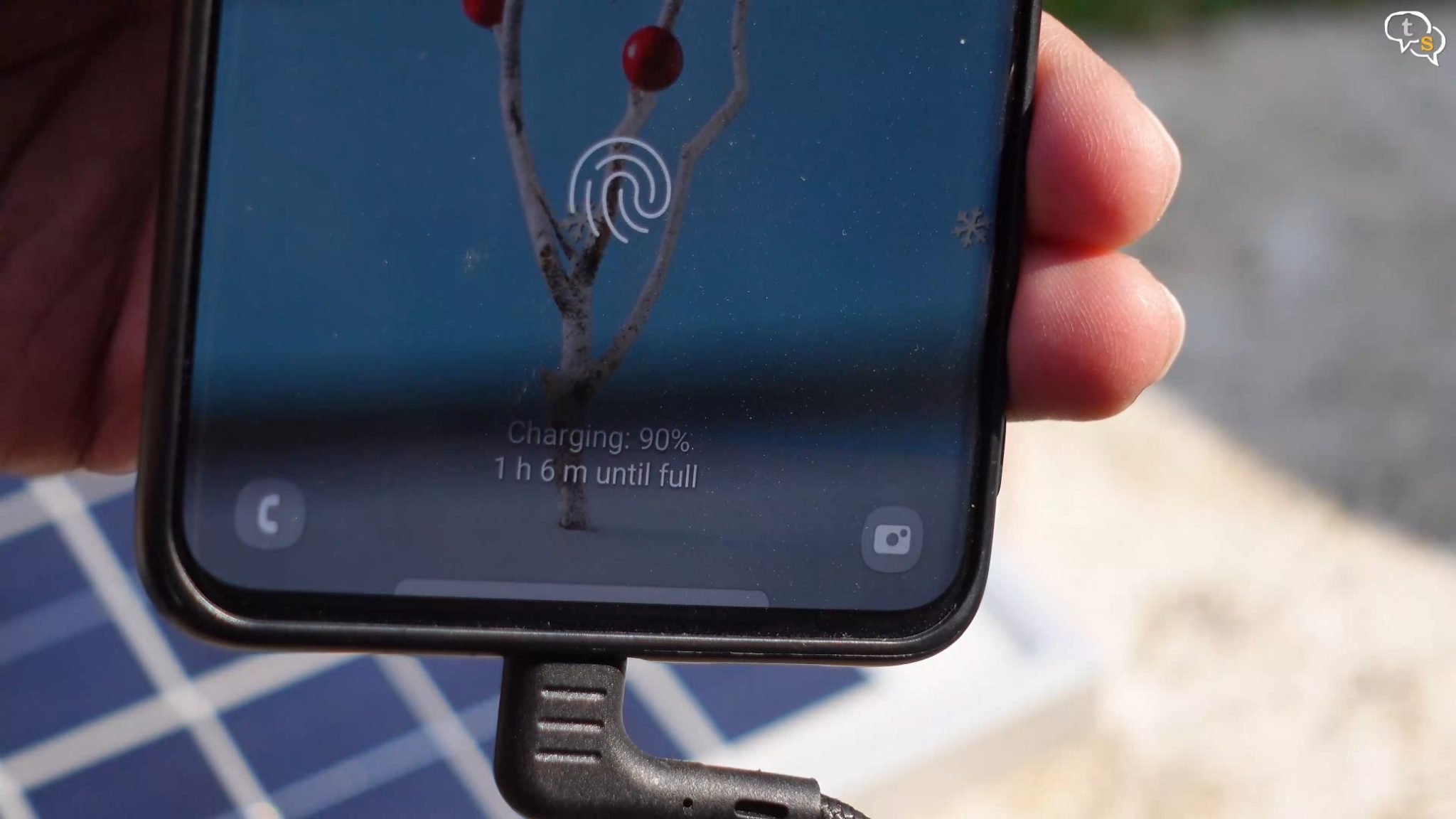
Plugging in a USB-cable and connecting the other end to a phone. It’s working, It cannot fast charge my phone, but at least it’s working.
Let’s connect a CCTV camera to it. This is the Active Pixel battery powered camera. As the name suggests it has an internal battery, which I plan to charge during the day using the solar panel and the camera would run using the battery in the night.
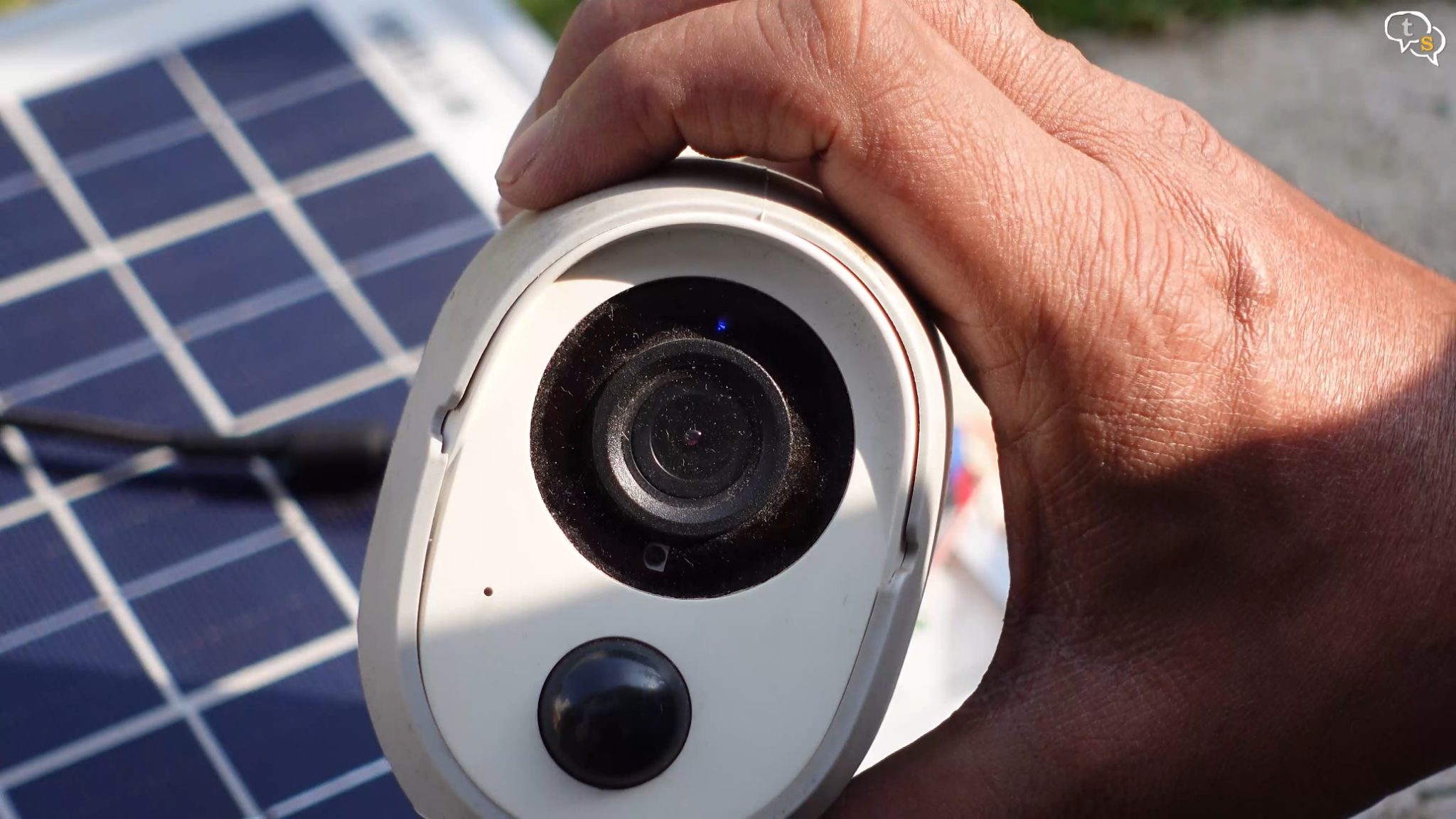
We have power, the blue light indicates that the camera is charging.
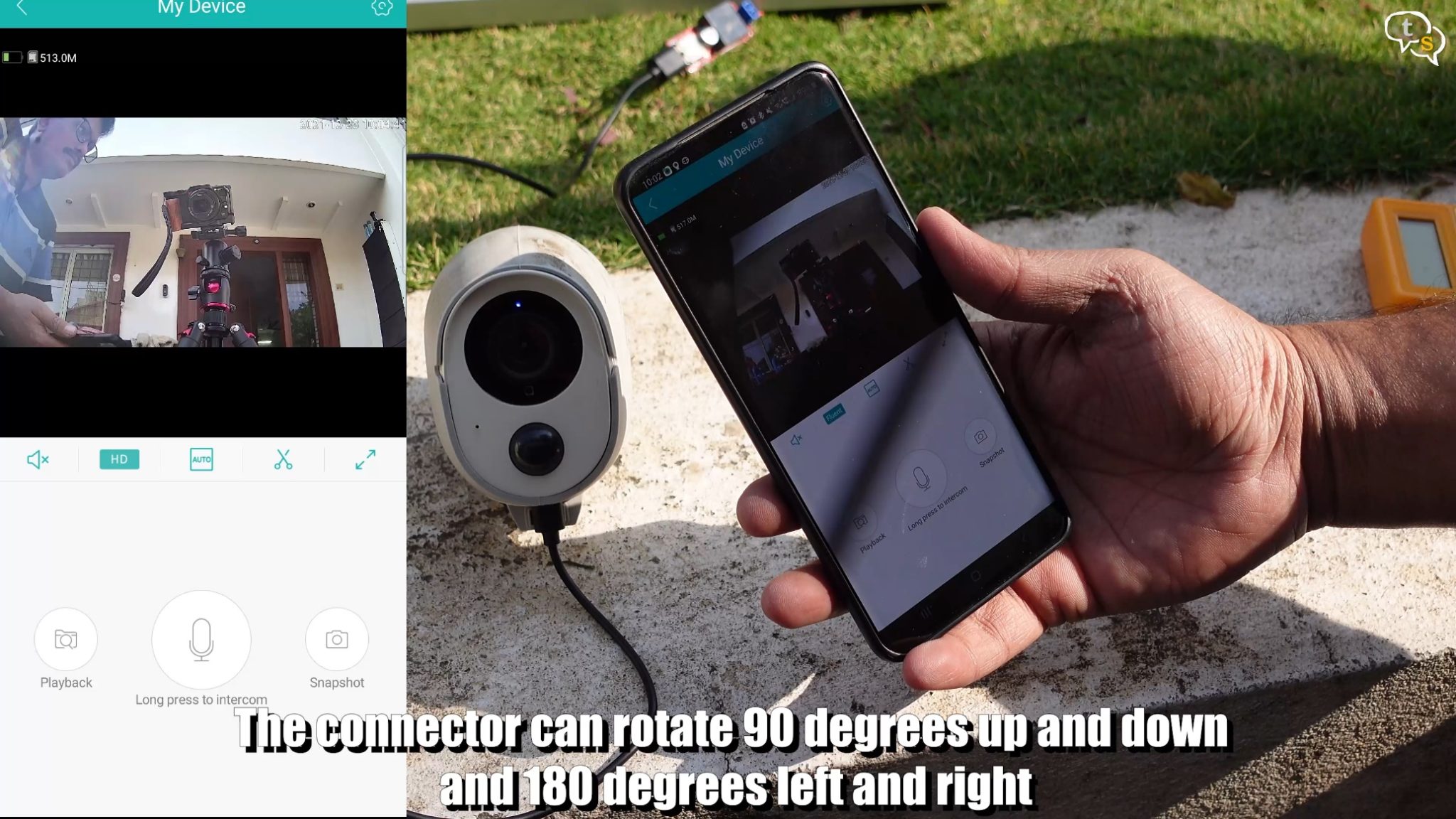
Opening up the app on my phone, I can view the live feed.
There you go, this is a live feed from the camera connected to the solar panel. You can see the battery bar here changing from small to big. This indicates that it’s charging.
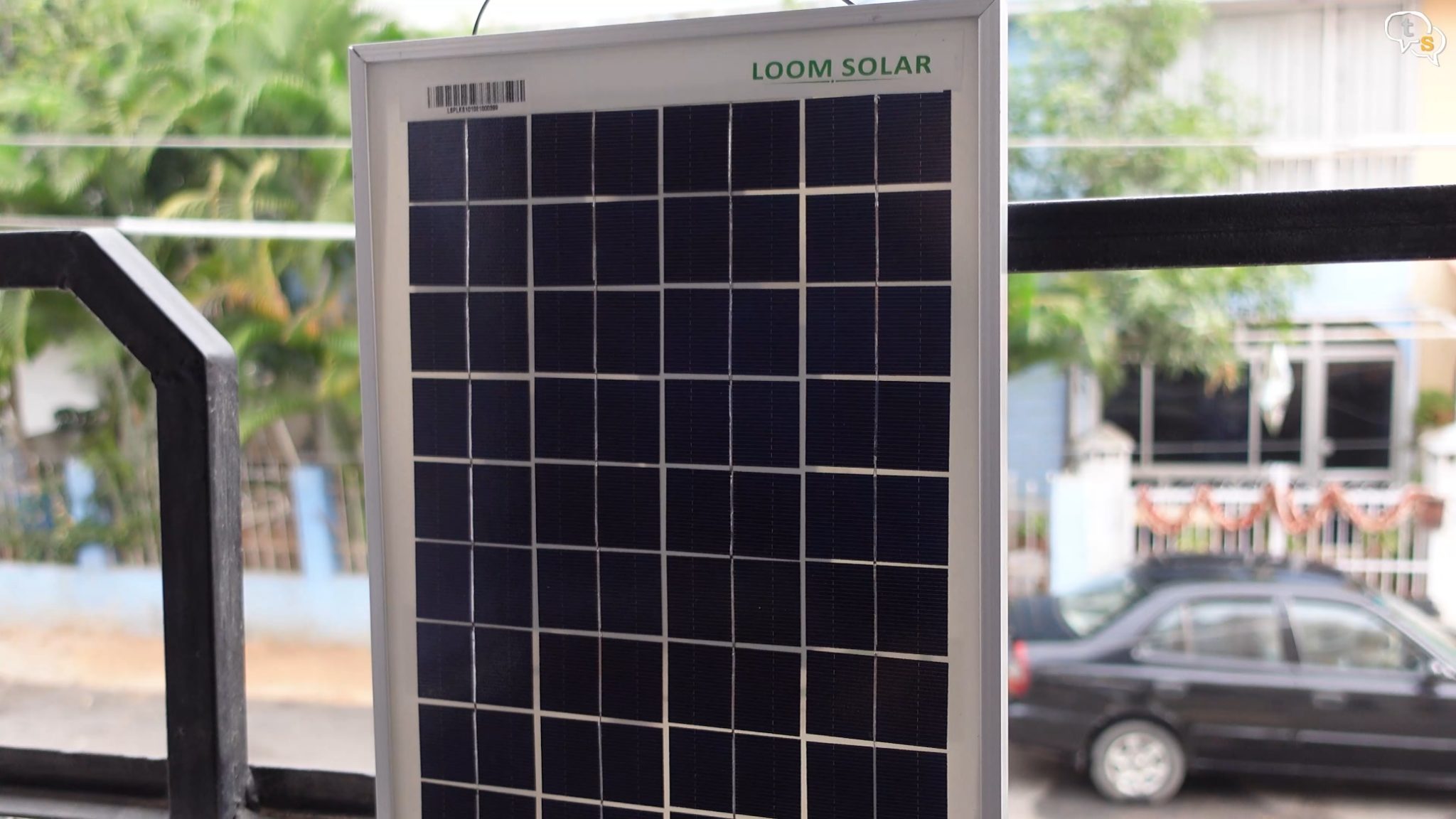
The solar panel works, but as my house faces north, the sun moves away from my garden so the voltage keeps dropping as the day progresses. It has been quite cold and cloudy in Hyderabad, bringing down the amount of light available.
In summer I might get better performance as it gets blazing hot and effectively we have more light.
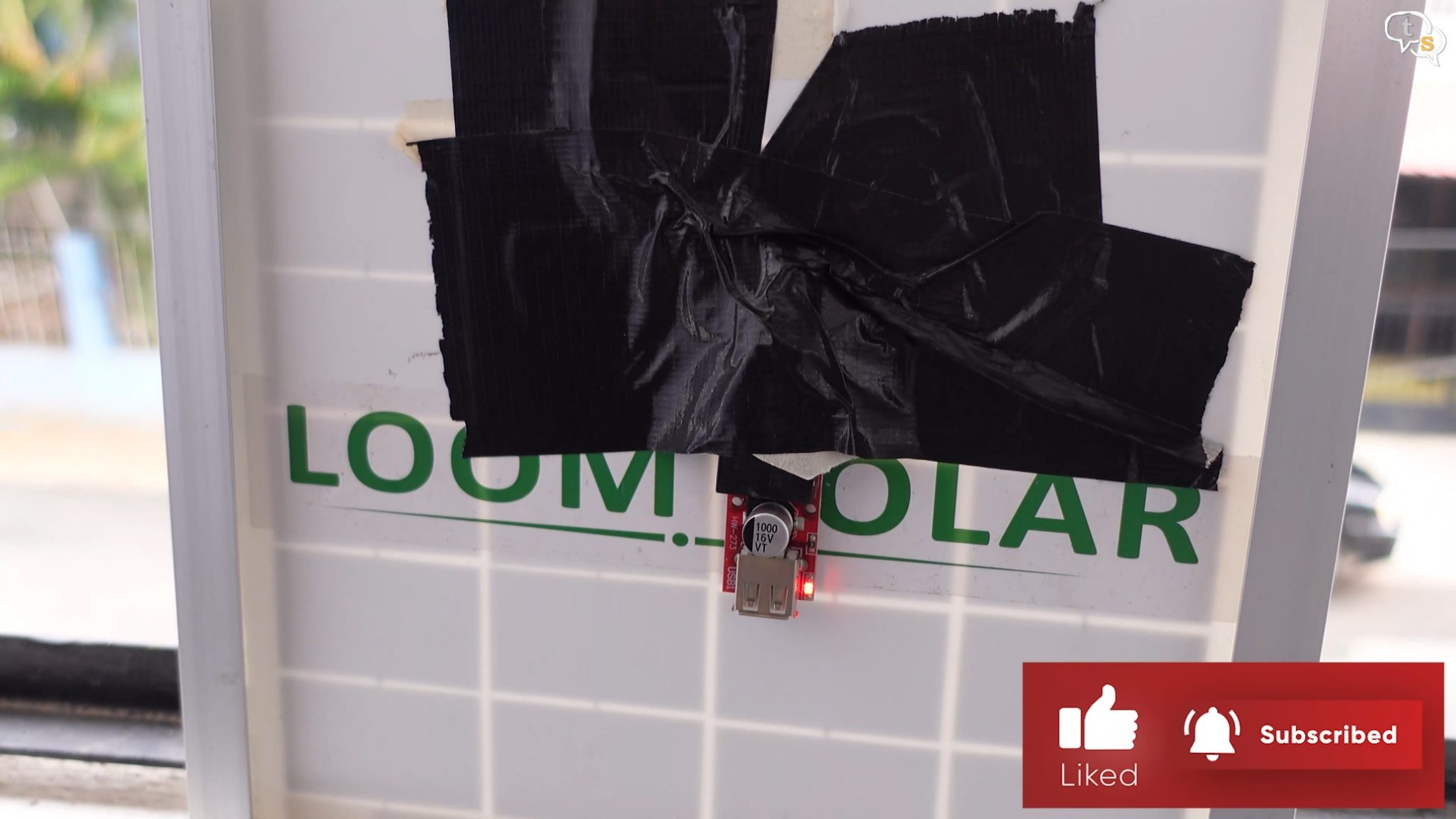
Solar panels are generally water proof, but I don’t think this section where we connect the wires is well protected.
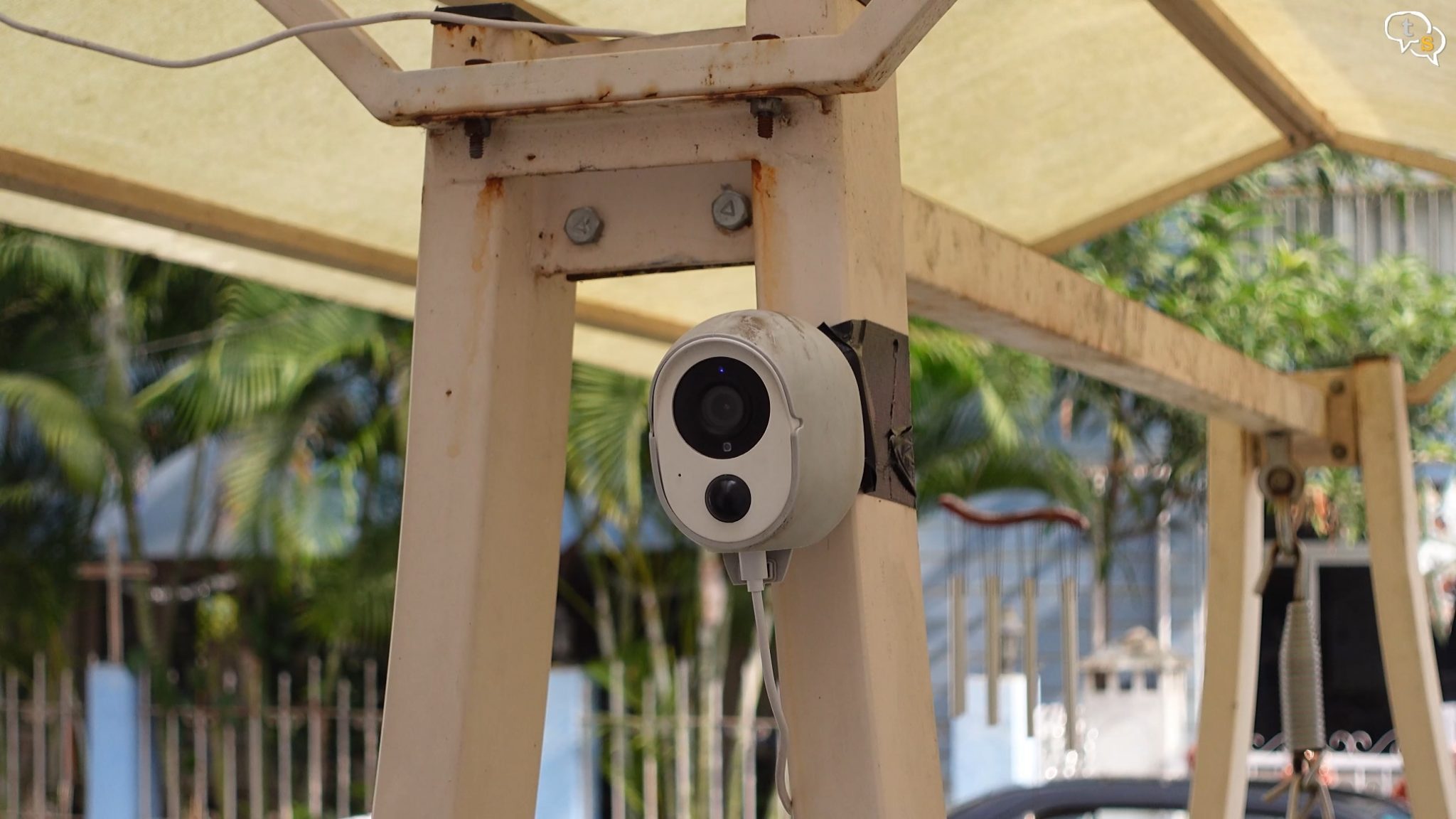
It did work in this low light environment, and if you are hiking or camping outdoors, this should provide a way to charge up your power banks, phones or other devices. It’s sturdy, build quality is top notch. No wires are included in the box. Efficiency is rated at 10.03 %, and loom solar guarantees 80 % efficiency after 25 years.
You can charge up power banks, small batteries or mobiles using this panel. I only wanted to test out this panel to see the kind of power it can generate, I can now scale it up to power more devices at home. What would you like to see powered via the solar panel, comment below the video on YouTube?


